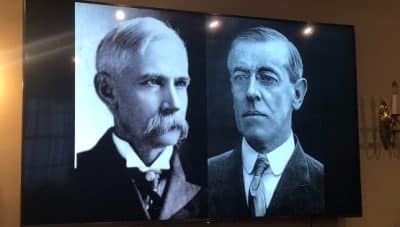
Xiangtao Meng, a fourth-year graduate student in the College of Natural Resources and Environment, has developed a new technique to make that easier. Meng devised a way to apply a famous class of chemical reactions to cellulose, a natural polymer often used for drug delivery. According to Kevin Edgar, a professor of sustainable biomaterials and Meng’s doctoral adviser, the new method “can get drugs to market, and to patients, that would otherwise fail.”
Taking medications orally is typically much more practical for patients than methods like intravenous injections, but the bioavailability of a drug — the amount that actually reaches the bloodstream — often suffers.
In order to reach the circulatory system, a drug taken orally must dissolve in the digestive tract. But many pharmaceutically active compounds tend to crystallize, making them less soluble. And some medications aren’t stable in the harsh environment of the stomach.
That means that patients have to ingest more of a drug to get the therapeutic dose — increasing the cost, risk of side effects, and the likelihood that the patient will simply miss a dose.
Suspending the drug in a polymer matrix can help.
Polymers are long chains of repeating units. Many familiar materials are polymers, including proteins, DNA, and cellulose, a sugar-based polymer which gives plant cell walls their structure.
Dispersing a drug in a polymer matrix protects it and suppresses the formation of insoluble crystals. The polymer eventually swells and releases the drug, allowing it to be absorbed into the bloodstream.
Because medications have broadly diverse chemical structures, properties, and dosing and delivery requirements, finding the right polymer matrix to work well with most drugs involves making and testing many different options.
Meng’s chemistry offers a new way to make a wide variety of polymer matrices using cellulose as a starting material.
Cellulose is an attractive material for drug delivery because it’s nontoxic, breaks down into components that are already present in the body, is water-permeable, and can survive the stomach’s acidic environment.
Unlike many synthetic polymers, which are often made from petrochemicals, cellulose is derived from wood, a renewable resource — supporting the mission of the College of Natural Resources and Environment to advance the science of sustainability.
When Meng first took on the project, there were only a handful of methods to make cellulose derivatives, limiting the number of options for drug delivery.
Meng decided to investigate whether he could modify cellulose using a technique called olefin cross-metathesis, a reaction developed in the 1970s and for which three chemists jointly received a Nobel Prize in 2005.
Olefin cross-metathesis is a very versatile reaction, and could be used to make a huge array of potential drug-delivery matrices, but it had never been applied to cellulose. With the help of Edgar and John Matson, a chemistry professor in the College of Science, Meng developed a method to successfully modify cellulose using cross-metathesis, overcoming challenges including solubility and the formation of undesirable side products.
Meng’s method will allow chemists to use a single readily available, renewable starting material to develop a wide variety of polymers specifically tuned to carry many different pharmaceutical targets.
Meng compares the process with grafting fruit trees. The spectrum of different polymers available is like “harvesting apples this year, peaches next year, and pears the next year — all from the same tree,” he said.
Meng, who is part of the Macromolecules and Interfaces Institute organized under theInstitute for Critical Technology and Applied Science (ICTAS), recently won the American Chemical Society’s CELL Division Graduate Student Award for this work. The prestigious, annual, international award carries a cash prize and an invitation and funding to speak at the American Chemical Society meeting in San Diego in March, 2016.
He has been able to produce a wide array of modified cellulose samples, which he sends to collaborators in a drug-delivery group at Purdue University. The team is currently targeting HIV drugs, which have notoriously poor solubility.
Meng, an ICTAS doctoral scholar from Shandong Province, China, is now working on incorporating another type of chemical reaction that will allow even more versatility — like “growing apples and peaches on the same tree,” he said.
It will also open the door to a wider array of potential applications, like the synthesis of antibacterial hydrogels for wound dressing, he said.










